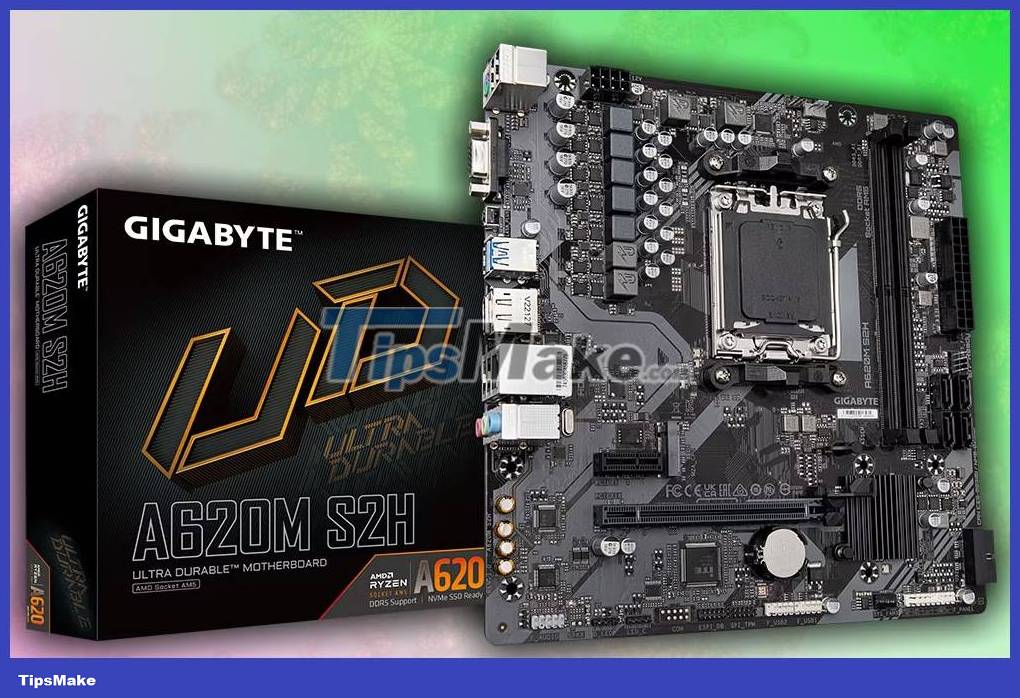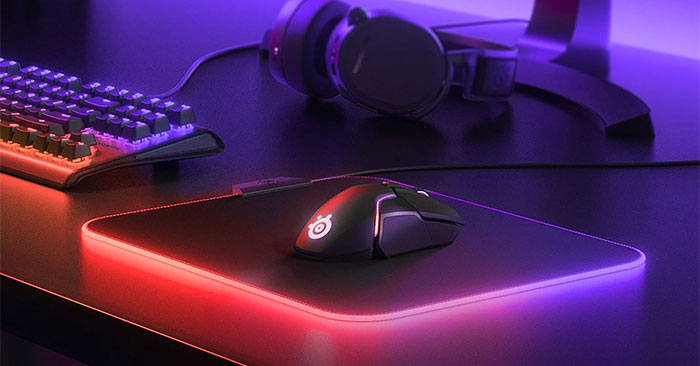Everything you need to know about AMD's A620 Entry-level motherboards
On March 31, 2023, AMD released the latest entry-level A620 chipset for the Ryzen 7000 Series, making the AM5 platform more accessible to budget-conscious consumers. Starting at just $85, the AMD A620 motherboard can power all non-X CPUs from the Zen 4 series while supporting overclocking DDR5 memory using AMD's in-house EXPO technology.
Feature-rich AMD B650 motherboards have been heavily discounted since launch, so can AMD's value-oriented A620 chipset deliver the same level of performance with an even lower input cost?
AMD A620 chipset overview and specifications:
When AMD announced the first Zen 4 series of CPUs in September 2022, users were impressed with the significant improvements of the AM5 platform. Not only do the Ryzen 7000 series perform on par with Intel's competitive 13th Gen Alder Lake and Raptor Lake CPUs, but they also take advantage of a new, more power-efficient microarchitecture.
However, a major downside to the Ryzen 7000 series revolves around the overpriced AM5 motherboards, especially with the X670E and X670 models costing more than the accompanying Zen 4 series of CPUs (Ryzen 9 7900X/7950X). While AMD has managed to mitigate some of these obvious problems by offering promotional bundles for the AM5 platform through its retail partners, many potential buyers still need an affordable alternative.
Thankfully, with value-focused AM5 motherboards based on the A620 chipset, AMD has succeeded in providing an affordable, reliable platform that makes the Ryzen 7000 series available to users at a lower price point. For starters, every A620 motherboard includes all the essential features associated with the AM5 CPU socket, including one-click memory overclocking (via the AMD EXPO tool) and up to 32 usable PCIe lanes.
Meanwhile, at the platform level, AMD's A620 chipset uses the same Promontory 21 silicon as its high-end versions (B650/B650E and X670/X670E) but with some disabled or limited connectors. Due to these adjustments, the A620 motherboard suffers from a weaker USB interface along with limited PCIe connectivity.
No USB 3.2" port
As a result, AMD's A620 chipset doesn't include any USB 3.2 Gen 2x2 (20Gbps) connectors, relying instead on a total of two USB 3.2 Gen 2x1 (10Gbps), two USB 3.2 Gen 1x1 (5Gbps) and up to six USB 2.0 (480 Mbps) on PCH (Platform Controller Hub). Regarding the CPU-enabled PCIe connection, the A620 Entry-level motherboard does not support the latest PCIe 5.0 standard on both the graphics slot and the storage slot, thereby reducing production costs.
PCIe 4 instead of PCIe 5
Considering the lack of PCIe 5.0 specification on consumer-grade GPUs and the minimal advantages that PCIe 5.0 x4 SSDs offer over their Gen 4 variants, AMD's decision to opt for the usual but reliable PCIe 4.0 interface seems like a fair trade-off. In terms of bandwidth allocation, the A620 chipset offers PCIe 4.0 x16 connectivity for discrete graphics cards, 4 PCIe Gen 4 lanes for NVMe M.2 SSDs, and 8 PCIe 3.0 lanes (4+4 configuration) for additional expansion cards or SATA 6Gb/s ports.
 Everything you need to know about AMD's A620 Entry-level motherboards Picture 1
Everything you need to know about AMD's A620 Entry-level motherboards Picture 1
However, WCCFTech reports that ASRock has released an A620 motherboard with support for PCIe 5 NVMe SSDs (faster than the PCIe 4 options), although future BIOS updates may cause issues.
Extended support for low TDP CPUs
Similar to Intel's approach with the H610/H710 and B660/B760 chipsets, AMD claims that A620-based motherboards will be ideal for Ryzen 7000 Non-X CPUs with a default TDP of 65W. While motherboard manufacturers can tailor more expensive models to support much higher TDP ranges (up to 120W), the budget-oriented A620 chipset allows for a maximum output of just 88W.
Despite such artificial limitations, A620 motherboards can technically boot with high-powered Zen 4 chips if the AGESA version of the BIOS supports them, but overall performance in multi-threaded applications can suffer due to the lack of powerful VRMs. For example, according to VideoCardz, a YouTuber successfully tested the flagship AMD Ryzen 7 7800X3D on an A620 motherboard and found that it delivered 5% less performance than on AMD's X670 motherboard chipset.
However, AMD expects these power delivery limitations to have little or no impact on gaming performance.
Overclocking is not supported
As before, AMD's budget limited A620 chipset doesn't support CPU overclocking, meaning any automatic overclocking or underclocking technologies like PBO (Precision Boost Overdrive) and Curve Optimizer will remain limited. Although the A620 motherboard includes native support for memory overclocking through EXPO profiles (up to DDR5-6000), manual memory tuning is not available.
| Specifications | A620 | B650 |
|---|---|---|
| Socket | AM5 (LGA 1718) | AM5 (LGA 1718) |
| PCIe lane (Graphics) | 1x16 (PCIe 4.0) | 1x16 or 2x8 (PCIe 4.0) |
| PCIe lanes (NVMe) | 1x4 (PCIe 4.0) | 1x4 (PCIe 4.0/PCIe 5.0 Optional) |
| Usable PCIe lanes (Total/PCIe 5.0) | 32/0 | 36/0 |
| Overclocking support | Are not | Have |
| 20Gbps USB Port (Max) | 0 | first |
| 10Gbps USB Port (Max) | 2 | 6 |
| USB Port 5Gbps (Max) | 2 | 4 |
| SATA 3.0 Port (Max) | 4 | 4 |
| Memory Channels (Maximum Supported Speeds) | Dual channel (DDR5-6000) | Dual Channel (DDR5-6400) |
| TDP (CPU Support) | Up to 120W | Up to 170W |
At the time of writing, A620 motherboards under $100 appear to be significantly limited in appeal, with ASRock and MSI being the only manufacturers offering Entry-level options at that price point. Compared to the B650 series, where several AM5 motherboards can be purchased for as low as $125, AMD's A620 chipset doesn't offer compelling value with the current price structure.
Should I buy an AMD A620 motherboard?
All in all, AMD's A620 chipset offers an attractive option for budget-conscious gamers and content creators looking for a more affordable entry point on the AM5 platform. At under $400 for a brand new CPU, motherboard, and 16GB of DDR5 memory, the cost of using an AMD AM5 build has dropped dramatically.
Although the A620 motherboard is a bit more expensive than expected, AMD's plan to release a Zen 4 APU under $200 with powerful integrated graphics improves the practicality of this Entry-level chipset. For now, the article recommends choosing a motherboard based on the B650 with an incredible price-to-performance ratio along with extended support for future AM5 processors up to 2025.
You should read it
- The terms you need to know when buying a motherboard
- Instructions for checking the mainboard model and motherboard manufacturer
- Dell replaced the motherboard for the computer with an Intel chipset error
- Things to know when choosing to buy mainboard
- Leaked images of upcoming Lenovo gaming motherboards
- What is motherboard? Learn about the mainboard in the computer
- 5 best B760 motherboards in 2024
- How to find motherboard compatible RAM
- List of MSI motherboards that support TPM 2.0
- List of Asus motherboards that support Windows 11
- Top 4 MSI Z490 motherboards worth buying to upgrade to Intel Core I Gen 10 platform
- Choose to buy the right board for your PC






 6 best AMD motherboards for gaming
6 best AMD motherboards for gaming Difference between EATX and ATX motherboards
Difference between EATX and ATX motherboards 5 best cheap PCIe 4.0 motherboards
5 best cheap PCIe 4.0 motherboards List of MSI motherboards that support Windows 11
List of MSI motherboards that support Windows 11 How to Learn Data Entry
How to Learn Data Entry How to create data entry forms in Excel
How to create data entry forms in Excel